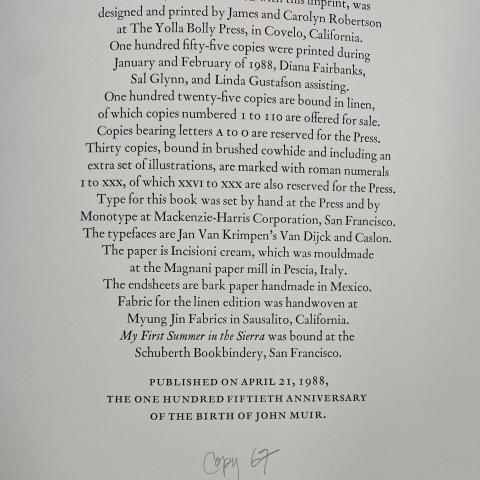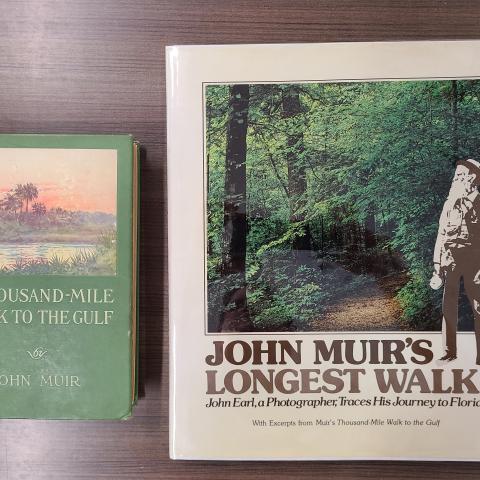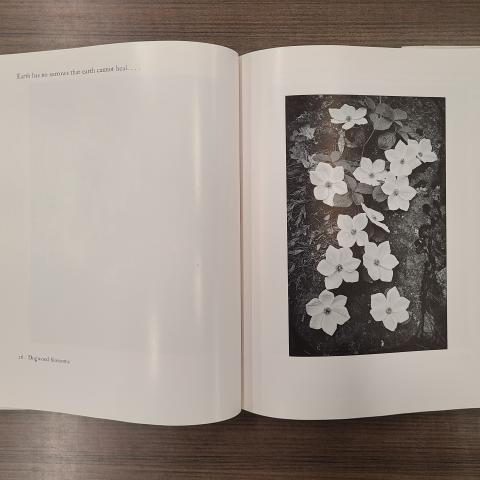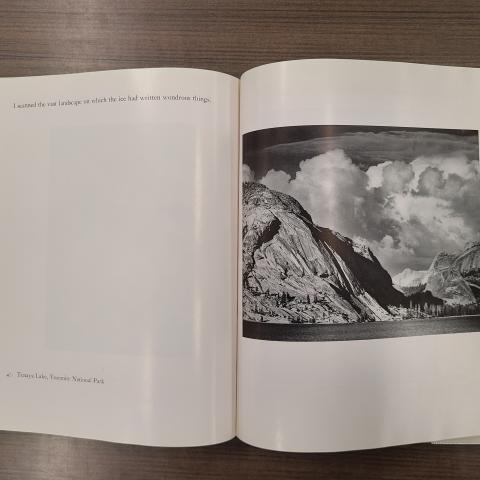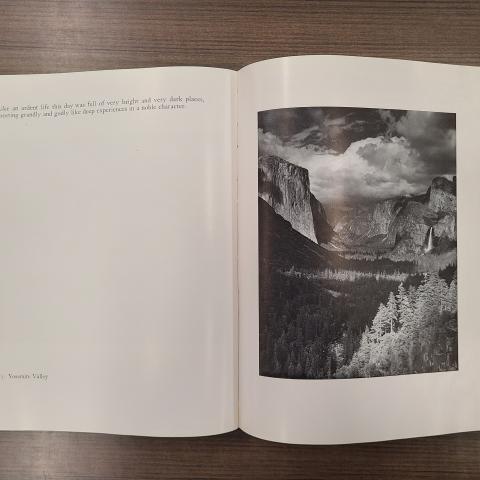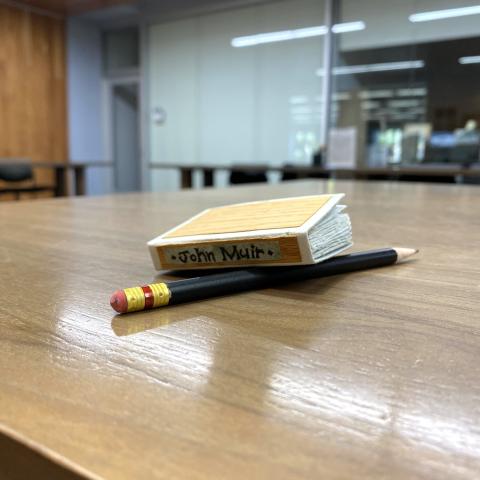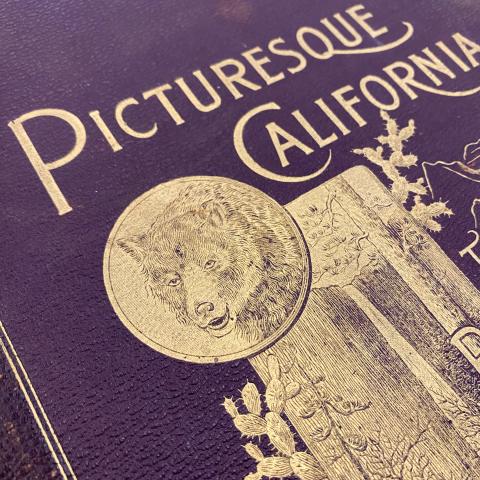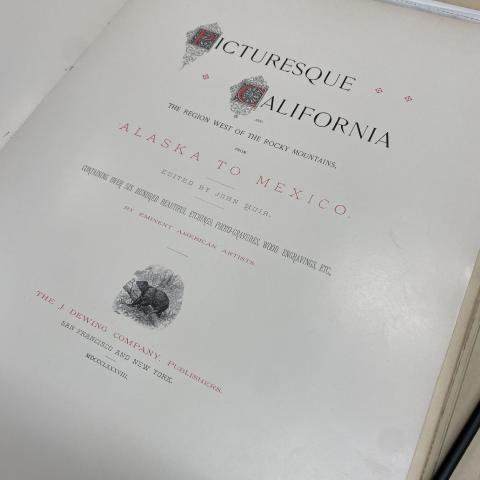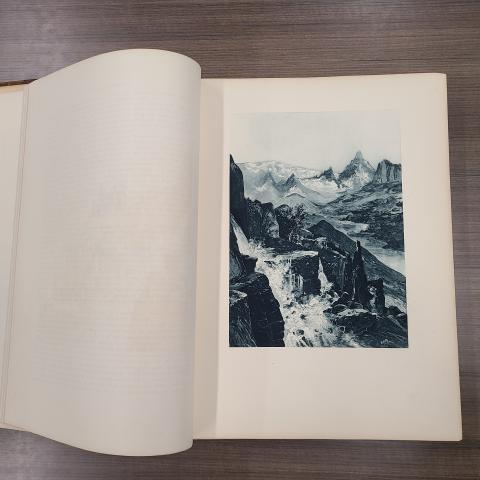Hiking through the Archives with John Muir
by Philip W. Walsh, Ph.D., Lecturer, Department of Interdisciplinary Studies and Liberal Studies - February 27, 2024

John Muir (1838-1914) was an American nature writer and an advocate for our National Park system. Born in Scotland, he moved with his family at the age of ten to Wisconsin, where his father farmed a homestead. Muir studied botany and geology at the University of Wisconsin; those disciplines informed his books and magazine articles. Leaving the university without graduating, he worked odd jobs until he was nearly blinded in an accident; he took this as a sign that he should leave civilization to travel in the wilderness. The journals he kept during his excursions provided material for his publications, in which he railed against the problems created by civilization and praised the wonders of the American wilderness. The culmination of his writing and his activism is perhaps the preservation of Yosemite through its addition to our National Park system in 1906, as well as his role in founding the Sierra Club.
 Like Henry David Thoreau, John Muir was inspired by the writing of the American philosopher Ralph Waldo Emerson. All of these authors took nature as their subject, making it the foundation of the United States’ cultural independence from England. Unlike Emerson’s more abstract writings, Muir’s works contain detailed descriptions of the wilderness, as in this passage from My First Summer in the Sierra: “Spent the day as usual looking about me, watching the changing lights…parting the meadow grass here and there and looking down into the underworld of mosses and liverworts; watching the busy ants and beetles and other small people at work and play like squirrels and bears in a forest.” Where Emerson imagined himself as a transparent eyeball, standing above the world, Muir knelt before the earth to observe it. Muir also describes a rainstorm in this book: “We were pelted about noon by a short, heavy rainstorm, sublime thunder reverberating among the mountains and cañons—some strokes near, crashing, ringing in the tense crisp air with startling keenness, while the distant peaks loomed gloriously through the cloud fringes and sheets of rain.” This passage is an example of the sublime, a common theme in Romantic literature, in which a potentially dangerous experience is deliberately sought out and reframed as beautiful.
Like Henry David Thoreau, John Muir was inspired by the writing of the American philosopher Ralph Waldo Emerson. All of these authors took nature as their subject, making it the foundation of the United States’ cultural independence from England. Unlike Emerson’s more abstract writings, Muir’s works contain detailed descriptions of the wilderness, as in this passage from My First Summer in the Sierra: “Spent the day as usual looking about me, watching the changing lights…parting the meadow grass here and there and looking down into the underworld of mosses and liverworts; watching the busy ants and beetles and other small people at work and play like squirrels and bears in a forest.” Where Emerson imagined himself as a transparent eyeball, standing above the world, Muir knelt before the earth to observe it. Muir also describes a rainstorm in this book: “We were pelted about noon by a short, heavy rainstorm, sublime thunder reverberating among the mountains and cañons—some strokes near, crashing, ringing in the tense crisp air with startling keenness, while the distant peaks loomed gloriously through the cloud fringes and sheets of rain.” This passage is an example of the sublime, a common theme in Romantic literature, in which a potentially dangerous experience is deliberately sought out and reframed as beautiful.
This book also features Muir’s more humorous attempts to interact with wildlife, such as the time that he rushed at a bear, which he describes as “a broad, rusty bundle of ungovernable wildness,” because he wanted to see it run: “he stood his ground ready to fight and defend himself, lowered his head, thrust it forward, and looked sharply and fiercely at me.” Eventually, the bear walked away, “evidently neither fearing me very much nor trusting me.”
Special Collections & Archives has the first printing (1911) of this book, as well as an edition published by Carolyn and James Robertson, of Yolla Bolly Press, which specialized in handcrafted limited editions. This book, printed on paper which was mouldmade in Italy, with bark endpapers made in Mexico, features Michael McCurdy’s wood engravings of the landscapes in Muir’s work. Special Collections also holds two editions of Picturesque California, which Muir edited. This folio sized series, which was sold by subscription, features essays and artworks celebrating the natural wonders of the Californian landscape.
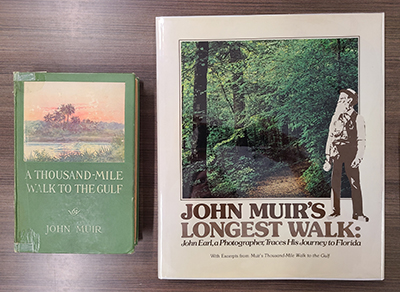 Muir’s A Thousand-Mile Walk to the Gulf, taken from his journals and published posthumously, records the development of Muir’s desire to spend as much of his life as possible in the wilderness. It also shows the development of his ideas about the place of human beings in nature, as in his praise for the alligators he saw on this trip. “Fierce and cruel they appear to us,” he wrote, “but beautiful in the eyes of God.” He goes on to encourage them thus: “May you long enjoy your lilies and rushes, and be blessed now and then with a mouthful of terror-stricken man by way of dainty!” Special Collections & Archives has the first edition, published in 1916, as well as John Muir’s Longest Walk, which features excerpts from Muir’s book, complemented with photographs by John Earle of some of the places that Muir visited during his journey.
Muir’s A Thousand-Mile Walk to the Gulf, taken from his journals and published posthumously, records the development of Muir’s desire to spend as much of his life as possible in the wilderness. It also shows the development of his ideas about the place of human beings in nature, as in his praise for the alligators he saw on this trip. “Fierce and cruel they appear to us,” he wrote, “but beautiful in the eyes of God.” He goes on to encourage them thus: “May you long enjoy your lilies and rushes, and be blessed now and then with a mouthful of terror-stricken man by way of dainty!” Special Collections & Archives has the first edition, published in 1916, as well as John Muir’s Longest Walk, which features excerpts from Muir’s book, complemented with photographs by John Earle of some of the places that Muir visited during his journey.
Yosemite and the Sierra Nevada brings together two of the region’s champions in one book, featuring black and white photographs of the terrain by Ansel Adams, best known for his iconic image of Yosemite’s Half Dome, alongside passages from John Muir’s writings. Special Collections & Archives also holds Climb the Mountains, a miniature book featuring phrases from Muir’s Our National Parks of 1901. Published by book artists Peter and Donna Thomas of Santa Cruz, California, this book is a single folded sheet of handmade paper between wood covers. The text, like so much of Muir’s writing, exhorts us to seek out “Nature’s peace” in the wilderness, which will cause, Muir predicts, our cares “to drop off like autumn leaves.”
Image Gallery
Post tagged as: special collections, rare books, california, united states
Read more Peek in the Stacks blog entries
